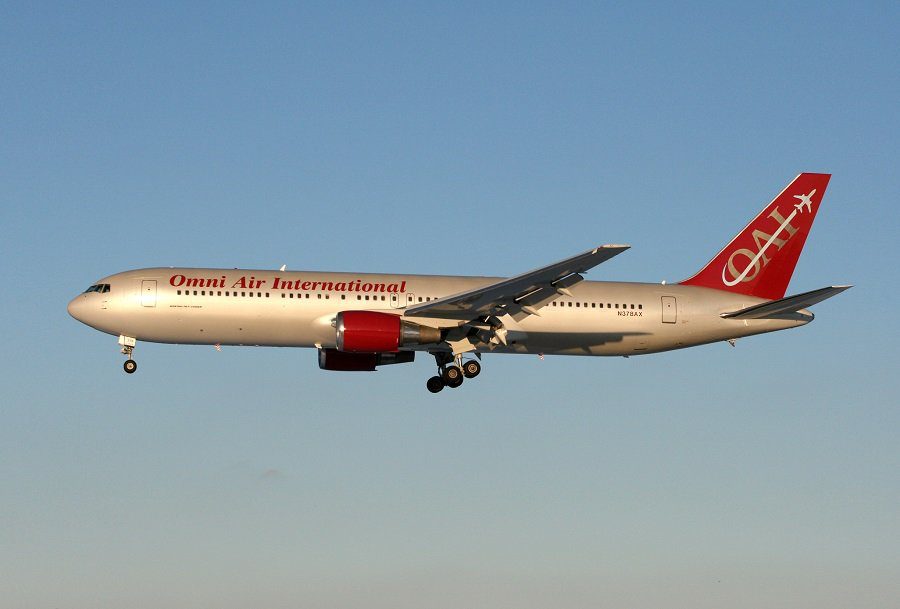Omni 767 Crew Underestimated Take-off Abort Speed Before Brake-Fire Incident

Irish investigators have determined that an Omni 767 crew rejected a take-off above the V1 threshold shortly before a brake-fire incident that triggered an evacuation.
Leading up to a brake-fire incident, the pilots of an Omni 767 rejected the take-off at 149 kt – compared with the calculated V1 of 146kt – after hearing a noise traced to an open cockpit window.
But the crew believed the aircraft had been traveling at less than 120 kt during the departure from Shannon on August 15, 2019.
The 767 flight crew training manual states that the inadvertent opening of an unlatched cockpit window is “not considered” an event that warrants a high-speed aborted take-off.
“Although the resulting noise levels may interfere with crew communications, it is safer to continue the take-off and close the window after becoming airborne,” it says.
Ironically, the first officer, upon hearing the noise, queried the status of the left-hand sliding cockpit window but could not be heard by the captain.
The captain remained unaware of the source of the noise and chose to reject the take-off, retarding the thrust levers and applying brakes at 152kt.
Ireland’s Air Accident Investigation Unit (AAIU) says the crew “underestimated” the 767’s speed at the time of the abort. Over the subsequent 28 minutes, the crew carried out several taxiing manoeuvres which would have required braking to control speed.

Fire badly damaged the left-hand undercarriage of the Omni 767-300ER; Image source: AAIU.
Was the brake-fire inevitable? While a rejection at 120 kt translated to a brake-cooling time of 44 minutes, the higher speed required a longer cooling period.
“Had the flight crew been aware of this, they may have adopted a more cautious approach, in particular with regards to taxiing the aircraft,” the inquiry says.
As the aircraft continued to taxi back to the parking stand, traveling along runway 24, the crew was informed of smoke and fire from the left-hand main landing-gear. The captain ordered an evacuation.
Examination of the wheels, brakes, and flight-recorder data could not identify the cause of the fire, which badly damaged the forward tyres on the bogie as well as hydraulic lines.
But the inquiry believes the fire resulted from overheating of the brake system after a high-speed rejected take-off and a lengthy period of taxiing during which the brakes, particularly on the left side, were used to control the aircraft.
None of the 145 passengers and 10 crew members was seriously injured during the event. Cockpit-voice recorder information shows the pilots had carried out the ‘before start’ checklist, during which the captain responded with ”locked” to the first officer’s call on the cockpit windows.
Source: FlightGlobal, “Omni 767 Crew Underestimated Take-off Abort Speed Before Brake Fire,” David Kaminski-Morrow, November 23, 2021.
Circumstances can crop up anywhere at any time if proper and safe sequence and procedures are not planned and followed. We encourage you to learn and use the TapRooT® System to find and fix problems.
TapRooT® has a team of investigators and instructors with years of extensive training ready to offer assistance worldwide. We also offer ongoing support to our clients through free newsletters and root cause tip videos, the root cause analysis blog, and our annual Global TapRooT® Summit.
Register for one of our courses. We offer a basic 2-day course and an advanced 5-day course. Contact us or call 865.539.2139 about having a course at your site or for further root cause analysis opportunities. We’re here to find solutions for you.
Contact us to discuss training your employees on-site. You may also call us at 865.539.2139 to speak to an instructor, schedule an executive briefing, or book on-site training for your team.



